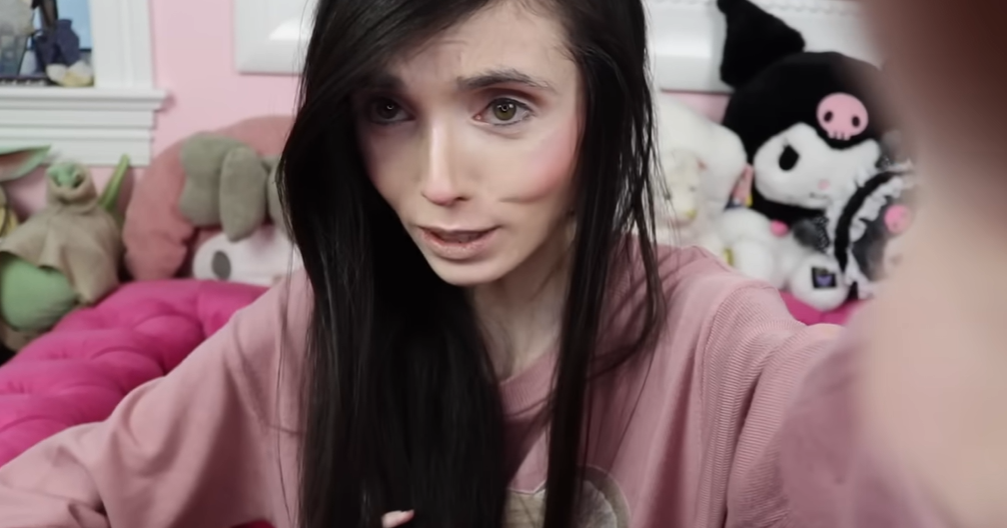The Eugenia Cooney lawsuit represents a particularly important turning point. A federal judge’s order for TikTok to provide internal documents pertaining to the influencer was not just a formality; rather, it was a daring declaration that responsibility in digital environments is now mandatory. Platforms’ responses to user safety concerns are thought to be greatly influenced by the court’s demand for transparency, especially when the mental or physical health of creators is clearly at risk.
Eugenia Cooney, a digital personality whose name inspires both awe and worry, is at the center of this legal and cultural reckoning. Cooney’s online persona, which has garnered millions of followers due to her doll-like appearance and fragile physique, has also caused mental health advocates to become increasingly anxious. Despite being extremely personal, her public struggle with anorexia has come to represent how social media algorithms increase engagement vulnerability.
TikTok is required by Judge Peter H. Kang’s October 20 ruling to provide internal documents and communications related to Cooney’s May 2025 livestream, in which she was seen visibly collapsing on camera, and her subsequent visit to the company’s New York headquarters. The ruling is a component of the Social Media Adolescent Addiction/Personal Injury Products Liability case, a much larger legal effort that combines hundreds of lawsuits against prominent platforms like Snapchat, YouTube, TikTok, and Meta.
The plaintiffs contend that these businesses intentionally take advantage of behavioral psychology to maintain users’ attention. They assert that the features, such as algorithmic feeds, infinite scrolling, and push notifications, were designed to hold users’ attention for as long as possible rather than to educate or amuse them. They claim that by doing this, the businesses have successfully produced “digital addictions” that cause eating disorders, anxiety, and depression in younger audiences.
Eugenia Cooney – Case Overview
| Category | Details |
|---|---|
| Full Name | Eugenia Sullivan Cooney |
| Profession | YouTuber, TikTok Influencer, Content Creator |
| Known For | Beauty, fashion, and lifestyle videos; public discussions about mental health |
| TikTok Followers | Over 2 million (before platform suspension) |
| Alleged Incident | Livestream health collapse and visit to TikTok’s New York office, May 2025 |
| Legal Context | Part of a U.S. federal multidistrict lawsuit on social media addiction |
| Court Order Date | October 20, 2025 |
| Judge | U.S. Magistrate Judge Peter H. Kang, Northern District of California |
| Defendant | TikTok (ByteDance Ltd.) |
| Reference | Law Commentary – Judge Orders TikTok to Produce Records |

These arguments now prominently center on Cooney’s case. In addition to its shock value, her livestream incident garnered a lot of attention because it exposed social media’s disregard for creator health. Critics claim that TikTok’s algorithm favored her posts despite the fact that they obviously showed physical distress, implying that engagement metrics were more important than morality. The plaintiffs maintain that TikTok’s internal communications from that time frame could demonstrate that the company knew about possible harm but did nothing about it.
The legal team for TikTok vehemently objected, claiming that the request for internal documents was intrusive and unduly broad. The business insisted that it had already provided enough documents and that Cooney was not directly involved in the case because he was a private individual. Judge Kang’s decision struck a careful balance between preserving Cooney’s privacy and permitting limited discovery. In order to limit the attention to the livestream incident and its aftermath, the court ordered TikTok to release only content related to user safety, public relations, and complaint-handling staff.
The court’s ruling demonstrates a very clear understanding of how discovery ought to operate in a time when digital platforms store enormous amounts of personal information. Judge Kang stressed proportionality—allowing examination of TikTok’s actions without making the case a public spectacle—instead of permitting an unrestricted search. This is a particularly novel approach, according to legal analysts, that acknowledges the privacy rights of those involved in algorithmic controversy as well as the societal stakes.
The case has deeply human aspects in addition to its legal ramifications. The difficulties faced by innumerable artists who have transformed their lives into performance venues are reflected in Eugenia Cooney’s experience. Her frequently delicate and artistic content has been read as both a form of silent distress and self-expression. There has never been a more obvious conflict between corporate responsibility and creative freedom. Many people view Cooney as a tragic example of the paradoxes of digital culture, where not only does fame reward authenticity, it can also magnify suffering.
Judge Yvonne Gonzalez Rogers is in charge of the larger case, which focuses on the fundamental business strategies of significant tech firms. Plaintiffs contend that social media platforms are legally liable for predictable harm because they operate like products with inherent design risks. This interpretation is based on conventional product liability law, which holds producers liable for flaws. Here, the alleged “defect” lies in the psychological manipulation built into these apps’ design.
Tech companies, unsurprisingly, reject this framing. Citing Section 230 of the Communications Decency Act to avoid liability for user-generated content, they maintain that their services are instruments for connection rather than coercion. Additionally, they claim that their recommendation algorithms represent editorial decisions rather than flawed designs, invoking the right to free speech. However, in a time when the distinction between editorial influence and design is becoming more hazy, this once-unquestionable defense seems more and more flimsy.
It is impossible to overestimate Eugenia Cooney’s contribution as an indirect catalyst to this legal movement. Her presence has rekindled conversations about how platforms capitalize on vulnerability by transforming personal suffering into viral events that generate ad revenue. Advocates for mental health have hailed the lawsuit as an important step in holding tech companies accountable for their long-standing exploitation of human vulnerability.

